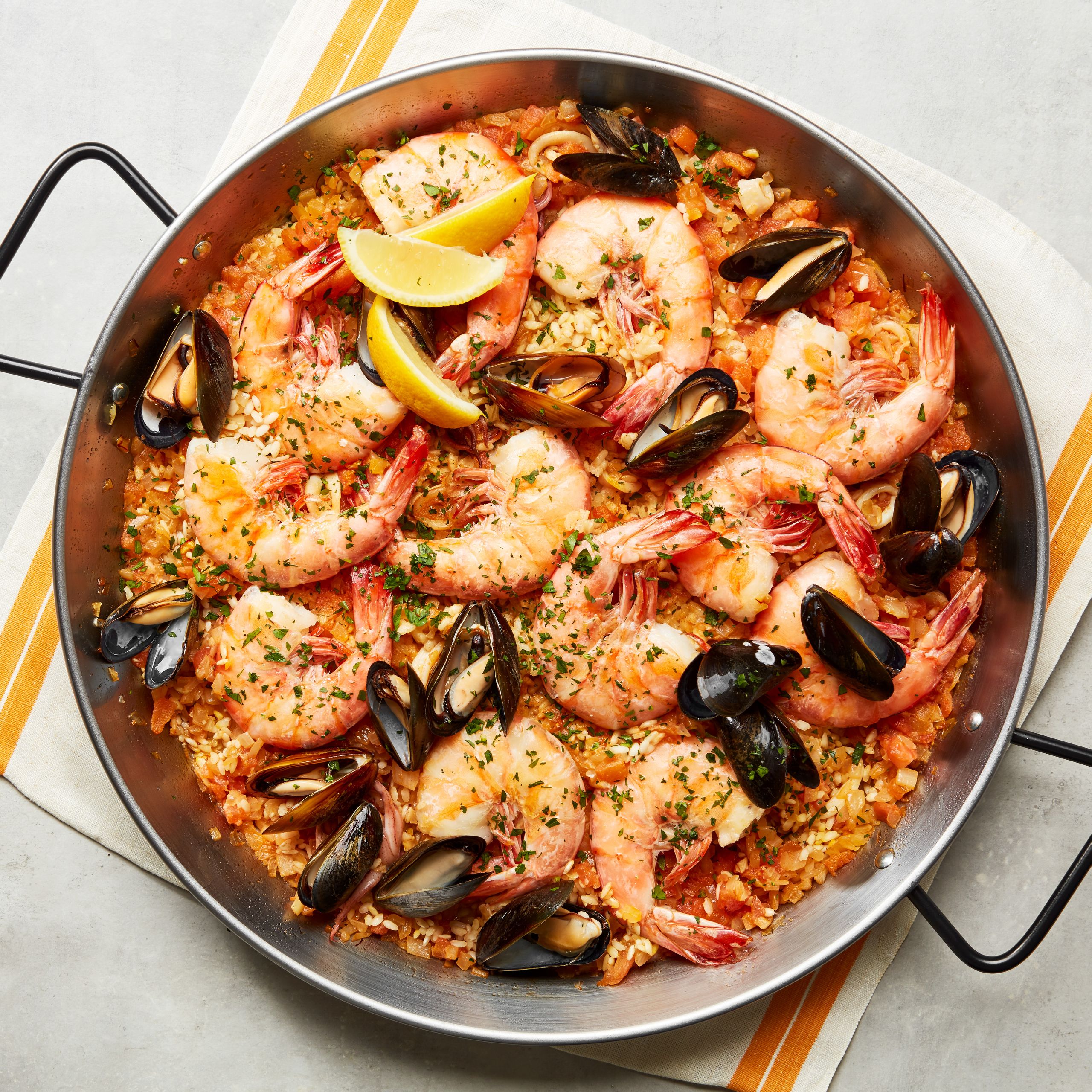

# Paella: A Gastronomic Treasure from Valencia
Paella, a dish that encapsulates the core of Spanish gastronomy, is a lively rice creation that hails from Valencia. Renowned for its deep flavors and eye-catching presentation, paella has become a staple of Spanish heritage, enchanting food enthusiasts worldwide. This article delves into the origins, components, cooking methods, and adaptations of this legendary dish, with a particular emphasis on the cherished socarrat—the crispy, toasted rice morsels that signify a flawlessly prepared paella.
## The Charm of Paella
For many, paella signifies a culinary fantasy, a dish that conjures visions of sun-drenched Spanish scenery and joyful gatherings. Its visual appeal, combined with a delightful array of ingredients, makes it an essential experience for any food aficionado. Traditionally, the dish features short-grain rice, saffron, and an assortment of proteins such as seafood, chicken, and rabbit, providing a flexible choice for diverse tastes.
## What is Paella?
The word “paella” originates from the Valencian term for “frying pan,” referencing the wide, shallow vessel used to prepare this dish. While the traditional recipe consists of rice, beans, rabbit, chicken, and saffron, contemporary variations have diversified to include seafood and vegetarian selections. The most favored iteration is the mixed paella, combining both meats and seafood.
## How to Prepare Paella
Crafting a delectable paella involves several essential steps:
1. **Soak the Saffron**: Start by soaking saffron strands in hot water to unlock their color and fragrance.
2. **Sear the Proteins**: Heat olive oil in a paella pan, browning chicken and chorizo, and briefly cooking shrimp.
3. **Sweat the Aromatics**: Mix in onions, garlic, tomatoes, and paprika, cooking until aromatic.
4. **Add Liquids**: Pour in chicken stock and saffron water, bringing the mixture to a boil.
5. **Incorporate the Rice**: Evenly scatter the rice and allow it to simmer until most of the liquid is absorbed.
6. **Add Seafood**: Nest clams and shrimp into the rice.
7. **Cook on Low**: Keep cooking until the clams open and the rice is al dente.
8. **Create Socarrat**: Raise the heat for a few minutes to form the crispy rice crust.
9. **Rest and Serve**: Cover the paella and let it rest before serving.
## Key Ingredients for Paella
### Rice
The backbone of any excellent paella is the rice. Bomba rice, a short-grain type from Spain, is optimal as it takes in liquid without becoming soggy.
### Saffron
Saffron is the spice that imparts paella its distinctive golden color and unique taste. Although it is among the priciest spices, a small quantity is very effective.
### Proteins
Classic paella often incorporates rabbit and chicken, but seafood options such as shrimp, mussels, and clams are also widely enjoyed. The selection of protein can be adjusted to suit personal tastes.
### Vegetables
Green beans are frequently used, but other vegetables like bell peppers, peas, and artichokes can be added for additional variety.
### Stock
A well-flavored stock is vital for seasoning the rice. Homemade stock is recommended for optimal results.
## The Significance of Socarrat
Socarrat is the coveted layer of crispy rice located at the bottom of the paella pan. This caramelized layer is deemed the finest part of the dish, providing a satisfying crunch and concentrated taste. Achieving socarrat necessitates careful management of cooking time and heat.
## Varieties of Paella
1. **Valencian Paella**: The classic version featuring rabbit, chicken, and vegetables.
2. **Seafood Paella (Paella de Marisco)**: A seafood-exclusive variant, often more soupy due to the juices released by the seafood.
3. **Mixed Paella (Paella Mixta)**: A blend of meat and seafood, favored among diners.
4. **Black Paella (Paella Negra)**: Made with squid ink, offering a unique black hue.
5. **Vegetarian Paella**: Loaded with an array of vegetables, perfect for those who avoid meat.
## Cooking Equipment
While a traditional paella pan is best for making paella, a large cast iron skillet or even a frying pan can be utilized in a pinch. The crucial factor is to ensure the rice is evenly spread for optimal cooking.
## Conclusion
Paella is much more than a mere dish; it is a celebration of tastes, culture, and heritage. Whether savored in a lively restaurant in Valencia or crafted at home, paella unites people, creating a treasured culinary experience. With its vast array of ingredients and variations, there exists a paella for